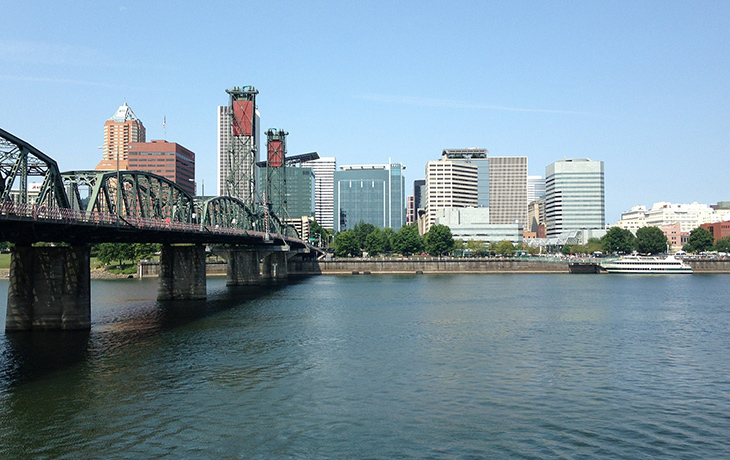After recently analyzing over 2,200 miles of municipal pipes and plumbing, Portland city officials have concluded that a large earthquake will knock out water for almost 1 million people in a 225 square mile region for two weeks or longer — not just homes and businesses, but fire stations, hospitals, and other critical first responder facilities.
The Portland Water Bureau told The Prepared that “approximately 1,500 to 3,000 main breaks are expected following a major earthquake,” which will affect their ability “to serve water to nearly a million people in the Portland-metro and surrounding areas.”
The Bureau’s Michael Stuhr, speaking on this same topic last month to Portland residents, put it this way:
“If the big earthquake happened tomorrow, would there be no water available whatsoever? Without meaning to be flip, the answer … is yes,” he said.
Stuhr said the city’s modeling shows three out of the five pipes that currently cross the Willamette River will break in the event of an earthquake, making it impossible to guarantee all residents will have a water supply post-disaster.
The Bureau told us they’re recommending all of their customers keep 14 gallons of water per person on-hand in case The Big One hits. That advice aligns with the minimum requirements experts include in emergency preparedness checklists, where storing one gallon per person per day for at least two weeks is the baseline.
Help is on the way, though… at least, eventually. A Bureau spokesperson told us they have active construction projects under way that are aimed at meeting the goals set out by the Oregon Resilience Plan, which calls for “improving the backbone so it is functional within 24 hours of the earthquake; and replacing enough distribution pipe over the next 30-50 years so the number of failures can be managed within two weeks.”
The part of the project that will get the critical backbone pipes under the Willamette River capable of being patched up within 24 hours of a quake should be done by 2022. These pipes carry water from one part of the region to the other, so a failure there risks water access for everyone in the area.
What you should do
Most of the reporting on the likely impact of a major Cascadia Subduction Zone (CSZ) earthquake focuses on the risk of liquefaction and damage to roads and buildings — this piece is typical. So this type of structural damage tends to be what people in earthquake country worry about and prepare for.
But this new Portland Water Bureau study shows that even if you’re not one of the estimated 250,000 people at risk of severe long-term displacement from a major CSZ quake, you’ll still probably be without access to clean water quite a while. This means that even if you don’t expect to see damage to your home or local roads, you should still take the threat to water availability just as seriously as if you lived right near the epicenter.
If you’re in the CSZ:
- See how to prepare for earthquakes
- Buy, fill, and store enough proper short-term emergency water storage containers to provide 14 gallons for everyone in your home
- Buy a survival water filter so you can treat additional water
- Do not plan on filling your bathtub, tapping your water heater, or filling up milk jugs / soda bottles / etc. — none of those options are appropriate
- The Portland-Vancouver area has a public alerts service that will give you a heads up if anything happens
- Portland maintains a good emergency website with an earthquake page
- There’s also a great, interactive map of geological hazards for Oregon residents, which you can use to figure out how much shaking and structural damage you’d be exposed to if the Big One hits — but again, even if you’re in the lower-risk, green-colored zone on the map, you still could be without water for weeks
Edit to add: The annual Oregon ShakeOut drill is on October 17, where people across the state practice responding to an earthquake.

